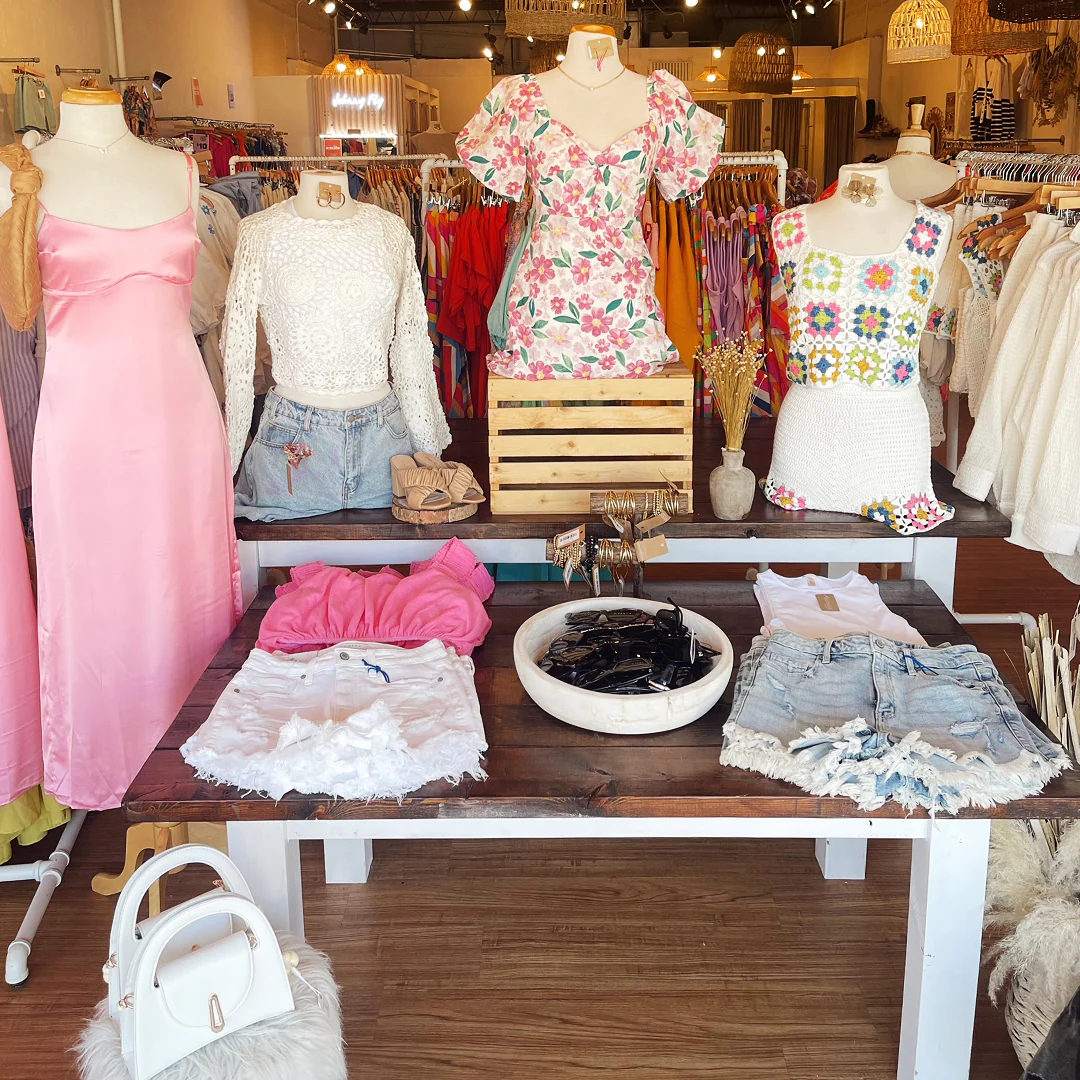The Influence of Social Media on Today's Boutique Fashion Trends
The Influence of Social Media on Today's Boutique Fashion Trends
Blog Article
Lasting Fashion: Exactly How Eco-Friendly Apparel Is Shaping the Future of Style
As the fashion market faces raising scrutiny over its ecological impact, the surge of lasting style uses an encouraging alternative that lines up style with environmental responsibility. boutique fashion. Just how does this movement absolutely influence the future trajectory of style, and what difficulties exist ahead in its extensive fostering?
Innovative Sustainable Materials
As the fashion sector grapples with its ecological effect, cutting-edge lasting materials have emerged as a vital service for reducing eco-friendly footprints. These products not just reduce dependence on fossil gas however additionally lessen unsafe pesticide use and water usage.
Along with plant-based materials, improvements in biofabrication have actually led to the development of lab-grown textiles. Mycelium leather, obtained from mushroom roots, offers a versatile and eco-friendly alternative to pet natural leather. Its manufacturing results in substantially lower carbon emissions and water usage, making it a more sustainable option for style designers seeking to straighten with green methods.
Recycled products are also acquiring grip, with polyester made from recycled plastic containers standing for a significant breakthrough. This innovation not only draws away plastic waste from land fills and seas however likewise decreases power usage compared to producing virgin polyester. With each other, these materials emphasize the possibility for an extra lasting fashion market, paving the method for environmentally mindful design and production.
Eco-Conscious Manufacturing
Structure on the innovations in lasting materials, the style sector is also re-evaluating its manufacturing procedures to further minimize environmental impact. Key methods consist of lessening water consumption, lowering carbon discharges, and eliminating hazardous chemicals.
An additional crucial facet is the reduction of harmful chemicals commonly utilized in dyeing and ending up fabrics. Eco-conscious suppliers are moving in the direction of plant-based dyes and waterless dyeing modern technologies, which not just protect local ecosystems but also improve employee safety and security. Developments like electronic printing reduce textile waste and power intake, supplying a cleaner option to conventional techniques.
Additionally, transparency and traceability have come to be paramount. With the innovation of blockchain modern technology, firms can currently supply in-depth insights into their supply chains, guaranteeing ethical and eco-friendly methods at each step. This openness builds consumer trust and encourages brands to keep high sustainability standards. As the need for eco-conscious items grows, producers are urged to introduce, making certain that the future of fashion is both lasting and elegant.
The Rise of Upcycling
Upcycling, a transformative practice in lasting fashion, entails artistically repurposing disposed of materials right into new, top quality items. This ingenious technique not only minimizes waste but additionally lessens the need for basic materials, thus minimizing the environmental influence of apparel production. By reimagining and reconstructing existing items, developers and fashion brand names have the ability to infuse originality right into their collections while promoting environmental obligation.

Moreover, the upcycling activity has actually encouraged independent developers and small organizations, that commonly lead in innovation because of their dexterity and creativity. By profiting from the bountiful availability of extra materials, these entities add to a round economic situation, here are the findings demonstrating that style can be both sustainable and stylish. Through upcycling, the industry takes considerable strides in the direction of an extra accountable and mindful future.
Thrift Society's Impact
The expanding thrift culture significantly improves the landscape of sustainable style, highlighting the relevance of conscious intake. This cultural shift motivates customers to embrace pre-owned apparel, consequently reducing the demand for new garment manufacturing and lessening ecological effect. Thrift buying not just expands the lifecycle of clothes however also decreases the carbon impact connected with manufacturing, carrying, and dealing with garments.
A vital aspect of thrift society is its democratization of style. By offering a vast variety of styles from various eras at affordable costs, second hand stores make style accessible to a wider target market. This access cultivates a feeling of uniqueness and creativity, as consumers mix and match special items to curate personalized closets without adding to the quick style cycle.
In addition, thrift society advertises circularity in style, straightening with the principles of a round economy. As more designers and consumers embrace second hand society, the fashion market is compelled to adapt, incorporating lasting practices to meet the growing demand for eco-conscious options.

Future Trends in Style
Fashion's evolution is progressively formed by sustainability-driven initiatives and technical developments. As customers come to be more ecologically aware, the industry is reacting with groundbreaking improvements that redefine the future of design. One noticeable fad is the rise of electronic style, where online garments can be put on in enhanced reality environments, substantially decreasing material waste. This shift not only satisfies the digital-savvy consumer but also reduces the ecological footprint generally connected with garment manufacturing.
In addition, the combination of blockchain innovation supplies brand-new possibilities in transparency and traceability, permitting consumers to validate the sustainability credentials of their garments. boutique fashion. This ensures responsibility in supply chains and promotes honest sourcing methods. 3D printing is yet one more innovation that assures to reinvent manufacturing processes by making it possible for on-demand production, consequently minimizing excess stock and waste
As these innovations develop, they are poised to transform the fashion landscape, merging style with sustainability. The future of you could look here fashion, therefore, exists in a smooth mix of innovation, advancement, and eco-friendly duty.
Final Thought
The transformation of the style market via lasting techniques shows a crucial change go towards environmental responsibility. This evolution not just lines up style with eco-friendly sustainability yet additionally sets a criterion for future trends focused on responsibility and advancement.
As the fashion industry deals with raising scrutiny over its environmental effect, the increase of sustainable fashion offers an encouraging choice that lines up style with eco-friendly obligation.As the fashion market grapples with its ecological impact, ingenious lasting materials have actually emerged as a crucial remedy for reducing eco-friendly impacts. With each other, these materials underscore the possibility for an extra sustainable fashion sector, leading the method for environmentally aware layout and production.
Building on the innovations in lasting materials, the fashion industry is additionally re-evaluating its production processes to better minimize ecological influence. boutique fashion.Upcycling, a transformative technique in sustainable style, entails artistically repurposing thrown out products into new, high-grade items
Report this page